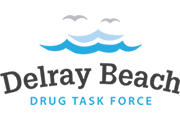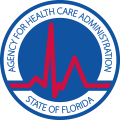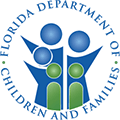Stimulants are a type of drug that stimulate or increase the activity of the central nervous system. They produce feelings of euphoria and wellbeing and can increase alertness, focus, and energy. When people use stimulants enough to negatively affect their lives and cause them distress, they likely meet criteria for stimulant use disorder.
Understanding Stimulant Addiction
Learn about stimulant addiction and abuse
Many people in the U.S. use stimulants every day, for example, the caffeine in coffee and the nicotine in cigarettes are both stimulants. Some stimulants are regularly prescribed by doctors, such as Ritalin and Adderall, which are used to treat attention-deficit/hyperactivity disorder (ADHD). Other stimulants, including amphetamines, methamphetamine (meth), and cocaine, are illegal. Because they increase focus and energy, people may be tempted to abuse stimulants. This abuse may range all the way from the young adult who buys Adderall from a friend to help him or herself study to a person with a long-time meth addiction. Sometimes people can even drink so much coffee that they become dependent on caffeine.
Because stimulants range so widely in potency and availability, the effects of stimulant use can range from relatively minor insomnia from drinking one too many cups of coffee, to life-threatening overdoses of cocaine. Regardless of the severity, there are treatment options available to help people overcome stimulant use disorder.
Statistics
Stimulant Abuse Statistics
Stimulant abuse crosses many age and socioeconomic lines. Two-thirds of young adults reported that they have had the opportunity to abuse prescription stimulants like Adderall or Ritalin. Ten percent have abused a stimulant in the past year and more than a third of young adults report that stimulant use is a growing problem among their peers. According to the Substance Abuse and Mental Health Services Administration (SAMHSA) in 2013, more than 1.9 million people in the U.S. suffered from stimulant use disorder. The majority of these people, totaling approximately 855,000, use cocaine as their drug of choice.
Causes & Risks
Causes and Risk Factors for Stimulant Abuse
The causes of stimulant use disorder are complex and varied, but current research notes that both genetic and environmental factors are partially to blame. These factors include the following:
Genetic: People who grow up in families with parents or siblings who abuse stimulants are more likely to do so themselves. Studies of identical twins suggest that genetics play a role in determining a person’s genetic vulnerability to drug addiction, and newer studies are even beginning to identify some possible genetic markers of this vulnerability.
Environmental: Although genetic vulnerability plays a role in determining a person’s chance of developing stimulant use disorder, growing up in a home environment where substance abuse is common also increases a person’s chance of developing stimulant use disorder. Students with high expectations or extreme work demands placed on them, such as medical students, may be more likely to abuse stimulants. In addition, people with a history of abuse, unemployment, poverty, and peers who use stimulants are more likely to develop stimulant use disorder.
Risk Factors:
- Personal history of substance use or mental illness
- Family history of substance use or mental illness
- Familiarity with, and easy access to, stimulant medications
- Men are at higher risk than women
- Chronic exposure to high stress
- Poverty
- Unemployment
- Personal history of trauma or violence
- High demands or expectations placed on oneself
- Exposure to stimulants in utero
Signs & Symptoms
Signs and Symptoms of Stimulant Abuse
While each person who abuses stimulants will have differing signs and symptoms based on the stimulant being used, the length of use, and personality patterns, the following are some common symptoms of abuse:
Behavioral symptoms:
- Deceptive behavior, lying, or stealing
- Meeting with multiple doctors in an attempt to gain multiple prescriptions for stimulants
- Visiting websites to order stimulants without a prescription
- Exhibiting excessive energy or motivation
- Aggressive or angry outbursts
- Risky or impulsive behaviors
Physical symptoms:
- Changes (usually decreases) in appetite
- Twitches or jitteriness
- Rapid heartbeat
- Elevated blood pressure
- Weight loss
- Hair loss
- Sweating
- Skin problems
Cognitive symptoms:
- Hyperfocus
- Flight of ideas
- Enhanced sensory awareness
- Racing thoughts
- Confusion
- Paranoia
- Hallucinations
- Delusions
- Poor judgment and decision-making
Psychosocial symptoms:
- Anxiety
- Depression
- Mood swings
- Anger/aggressiveness
- Increased confidence
Effects
Effects of Stimulant Abuse
The effects of stimulant abuse are diverse and depend on the stimulant being abused, the length and extent of abuse, and individual personality factors. These effects can include the following:
- Social isolation
- Stress or fracture of relationships
- Estrangement, divorce, or loss of child custody
- Liver, kidney, lung, or cardiovascular damage
- Gastrointestinal problems
- Development of cognitive deficits, such as memory, concentration, attention, and problem-solving difficulties
- Erratic behavior
- Job loss
- Financial problems
- Seizure
- Death
Co-Occurring Disorders
Stimulant Abuse & Co-Occurring Disorders
Often those who use or abuse stimulants struggle with other mental health disorders. Some of the most common co-occurring disorders are the following:
- Attention-deficit/hyperactivity disorder
- Depressive disorders
- Anxiety disorders
- Bipolar disorder
- Posttraumatic stress disorder
- Schizophrenia
- Eating disorders
Withdrawal
Effects of Stimulant Abuse Withdrawal & Overdose
Effects of stimulant withdrawal: If a person abuses stimulants for an extended period of time, he or she is at risk for developing a dependence on the stimulants. When that person then attempts to discontinue use, his or her body must readjust to functioning without the presence of the substance. This process of readjustment, called withdrawal, can be extremely uncomfortable and sometimes life-threatening. Common symptoms of withdrawal include:
- Cravings for the drug
- Irritability or angry outbursts
- Fatigue, exhaustion, or lethargy
- Hallucinations or delusions
- Paranoia
- Insomnia
- Musculoskeletal pain
- Dehydration
Effects of stimulant overdose: Sometimes in pursuit of a high, people who use stimulants may take more than their bodies can metabolize. This is an overdose, and stimulant overdose is a dangerous and potentially life-threatening situation. While the symptoms of overdose vary depending on the particular stimulant involved and the length and extent of use, the following are common symptoms of stimulant overdose:
- Rapid rise in heart rate and blood pressure
- Shallow or labored breathing
- Delirium or confusion
- Convulsions or seizure
- Stroke
- Loss of consciousness
- Coma
- Death












